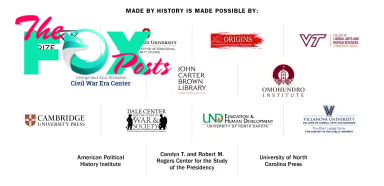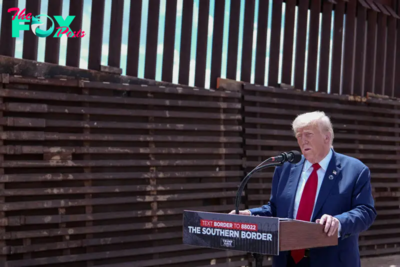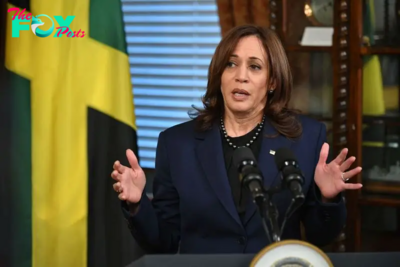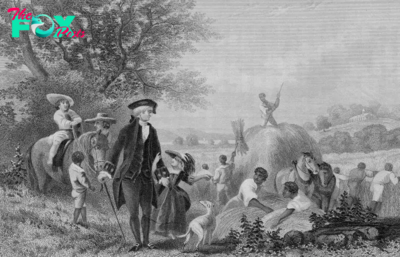History
Texas Is Trying to Upend Who Controls U.S. Immigration Policy
U.S. and Texas officials are at war over immigration and border control. The latest chapter came on March 27, when the U.S. Court of Appeals for the Fifth Circuit blocked a Texas law from going into effect, pending hearings on its constitutionality. The law makes it a crime for migrants to enter the state by crossing the U.S.-Mexico border without authorization. At stake is a critical question: Who controls immigration in the U.S.?
Since the late 19th century, the federal government has claimed the power to control who enters the U.S. Once immigrants are in the country, however, local jurisdictions play a vital role shaping their lives—either by providing support and immigrant-friendly policies, or through their own anti-immigration restrictions and monitoring.
Today, states like Texas are trying to blur the two areas of immigration policy, intruding on the power of the federal government to control the nation’s borders and to enforce federal immigration laws, with grave implications both for immigrants and for U.S. foreign policy.
Before the Civil War and Reconstruction, Congress played almost no role in regulating the admission, exclusion, or removal of immigrants. Concerned with safeguarding slavery, the South would never have countenanced a federal government strong enough to control the movement of people into the U.S. and within or between the states. Only when slavery was abolished did the era of national immigration control get underway.
Although Reconstruction was primarily concerned with addressing the aftermath of slavery, it had a major effect on immigrants of all backgrounds. The Fourteenth Amendment defined national citizenship for the first time, with birth on U.S. soil or naturalization as the two criteria. It became a powerful force for assimilating immigrants and their children, regardless of their background or status. It also extended rights of equal protection and due process to “persons,” not just citizens—including Asian immigrants, who remained barred from naturalizing. Ironically, however, it soon became clear that the newly expanded federal state created by Reconstruction could also be used to restrict immigration in a way that individual states could not.
Read More: How Republicans Learned to Love Tough Immigration Rhetoric
In two cases decided in 1875, the Supreme Court unanimously ruled that controlling immigrant admissions to the U.S. was exclusively a federal matter. Allowing “a single State” to make determinations regarding entry and removal, the court added, would allow that State “at her pleasure” to “embroil us in disastrous quarrels with other nations.” Immigration, in other words, was a matter of national security.
In response to these decisions, officials and politicians in the Northeast and the West called for new national legislation. The Immigration Act of 1882, modeled on antebellum state laws, taxed all foreign passengers and excluded those likely to need public assistance. Anti-Chinese restrictionists, meanwhile, pressured Congress to restrict the entry of Chinese laborers, and in 1882 legislators passed the Chinese Exclusion Act.
In Chae Chan Ping v. United States (1889), known as the Chinese Exclusion Case, the Supreme Court blessed the move, ruling that Congress and the executive could admit or exclude foreigners as they saw fit with minimal interference by the courts. “Jurisdiction over its own territory,” Justice Stephen Field wrote, “is an incident of every independent nation.” Every nation, to preserve its independence, had to guard against “foreign aggression and encroachment.” It did not matter whether the threat came from the actions of a foreign nation “or from vast hordes of its people crowding in upon us.” Field’s framing ignored the fact that the U.S, was eagerly facilitating the large-scale immigration of Europeans, whose labor spurred economic expansion.
This doctrine provided the basis for a national immigration system, which has governed who can enter the U.S. over the last 135 years. While Congress has made the law more restrictive or less restrictive at various times, federal—rather than state-level—control has remained consistent.
Yet, this never meant no role for states and localities when dealing with immigration. Cities and states always retained the capacity to shape immigrants’ lives after their arrival. At times of immigration controversy and surging nativism, that meant enacting restrictions on immigrants to try to deter them from coming into the country.
For example, throughout the 20th century, border states cooperated with federal authorities in enforcing exclusion and deportation. States and cities across the country restricted immigrants’ access to drivers’ licenses, public benefits, and education. Others required employment verification, penalized the leasing of property to certain immigrants, and prohibited day laborers from congregating in public spaces.
In 1994, California voters passed Proposition 187, which included draconian restrictions on immigrants. It attempted to deny access to public education, non-emergency health care, and other services to unsanctioned immigrants, and would have required state officials to report their presence. A federal district court invalidated the verification and reporting measures as an unconstitutional regulation of immigration by a state, and the denial of education as a violation of the Equal Protection Clause of the Fourteenth Amendment.
Yet, with Congress gridlocked on immigration in the 2000s, conservative states grew increasingly aggressive in pushing the boundaries of what was legally possible in terms of immigration restriction. In 2010, Arizona passed the Support Our Law Enforcement and Safe Neighborhoods Act (SB1070), which required non-resident aliens over the age of 18 to register and carry proof of status, criminalized solicitation of work by day laborers, instructed state law enforcement officers to determine the immigration status of suspects, and permitted warrantless arrests of those believed to be removable. In passing SB1070, the Arizona legislature declared its intention “to make attrition through enforcement the public policy of all state and local government agencies in Arizona.” The provisions of the act would “work together to discourage and deter the unlawful entry and presence of aliens.”
Read More: Republican Mayra Flores Won Over Key Texas Latinos. Can She Do It Again?
The Supreme Court struck down most of the law as an unconstitutional encroachment on federal power over immigration. Nonetheless, in dissent, Justice Antonin Scalia attempted to revive the antebellum tradition of state police power. “Notwithstanding ‘[t]he myth of an era of unrestricted immigration’ in the first 100 years of the Republic,” Scalia noted, “the States enacted numerous laws restricting the immigration of certain classes of aliens.” As a sovereign state, Scalia claimed, Arizona had “the inherent power to exclude persons from its territory.” To Scalia, SB 1070 didn’t challenge federal immigration laws, it simply aimed to enforce them more effectively.
Scalia’s argument was a signal to conservative states to keep trying—especially as the Supreme Court has moved further to the right. Texas has accepted that invitation, but it is going even further than Arizona did. Echoing the 1889 Chinese Exclusion Case, but claiming state supremacy over immigration, Texas Governor Greg Abbott announced that he had “declared an invasion under Article I, § 10, clause 3 to invoke Texas’s constitutional authority to defend and protect itself. That authority is the supreme law of the land and supersedes any federal statutes to the contrary.” This assertion of state sovereignty, however, threatens to overturn the constitutional balance of power set by the Civil War and Reconstruction.
Until now, even the most draconian immigration restrictions recognized that the federal government had the power to control entry to the U.S., as well as the power to enforce federal immigration laws. Texas challenges that basic premise. By criminalizing the entry of undocumented immigrants into the state, it’s seeking to usurp federal control over how to enforce U.S. immigration laws. If the courts allow such an infringement, the consequences for immigrants—and Texans of color who could be profiled as immigrants—would be devastating.
Allowing Texas’s law to stand could create foreign policy problems for the U.S., embroiling it in international coNFLicts. U.S. Solicitor General Elizabeth B. Prelogar recently cited the 1875 precedent in warning the Supreme Court that, if other states followed Texas’s example, “the resulting patchwork would cause an even greater interference with the Nation’s ability to speak with one voice in international affairs.”

A statement from Mexico’s foreign ministry on the fight over the Texas law made the same point by warning that “state and local legislative decisions” could not be allowed to threaten “bilateral efforts with the United States to ensure that migration is safe, orderly and respectful of human rights.” President Andrés Manuel López Obrador added that Mexico will refuse to accept any migrants returned to the country under the law.
Overall, History is clear: the federal government has long controlled immigration law—and for very good reason. Changing that could have catastrophic consequences, both for immigrants and for American foreign policy.
Kevin Kenny teaches history at NYU. He is the author of The Problem of Immigration in a Slaveholding Republic: Policing Mobility in the Nineteenth-Century United States (Oxford University Press, 2023).
Made by History takes readers beyond the headlines with articles written and edited by professional historians. Learn more about Made by History at TIME here. Opinions expressed do not necessarily reflect the views of TIME editors.
-

 History1w ago
History1w agoThe Democratic Party Realignment That Empowered Trump
-

 History1w ago
History1w agoWhy People Should Stop Comparing the U.S. to Weimar Germany
-

 History1w ago
History1w agoFlorida’s History Shows That Crossing Voters on Abortion Has Consequences
-

 History1w ago
History1w agoThe 1994 Campaign that Anticipated Trump’s Immigration Stance
-

 History2w ago
History2w agoThe Kamala Harris ‘Opportunity Agenda for Black Men’ Might Be Good Politics, But History Reveals It Has Flaws
-

 History2w ago
History2w agoLegacies of Slavery Across the Americas Still Shape Our Politics
-

 History2w ago
History2w agoKamala Harris Is Dressing for the Presidency
-

 History2w ago
History2w agoWhat Melania Trump’s Decision to Speak Out on Abortion Says About the GOP



























